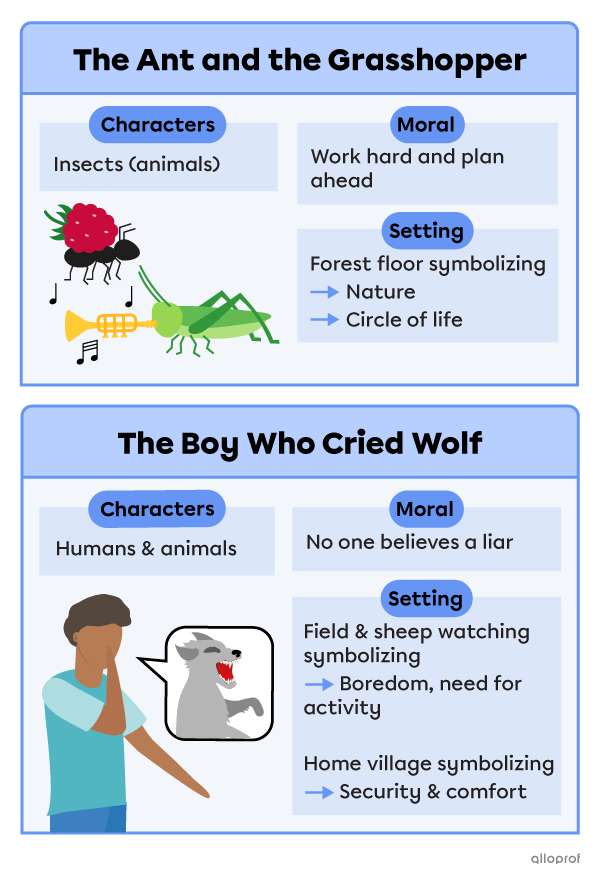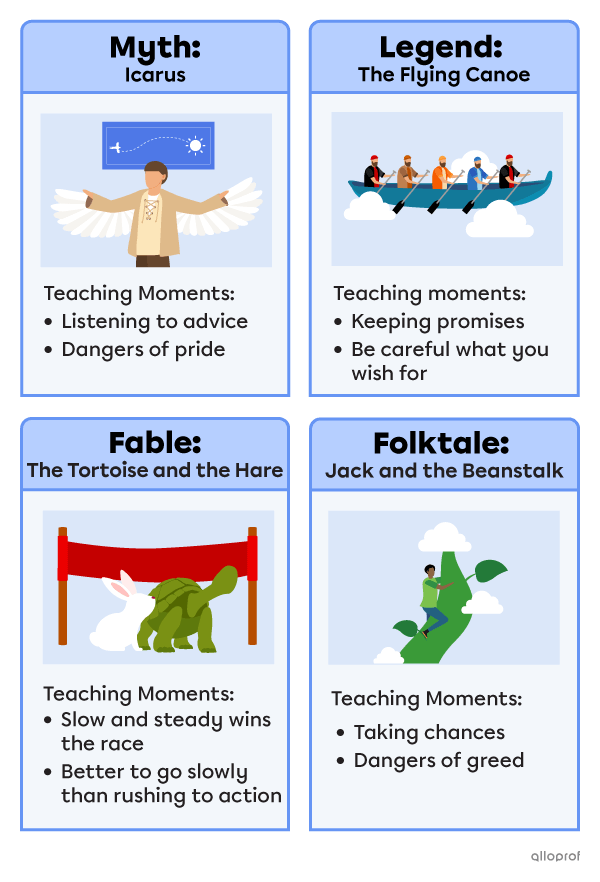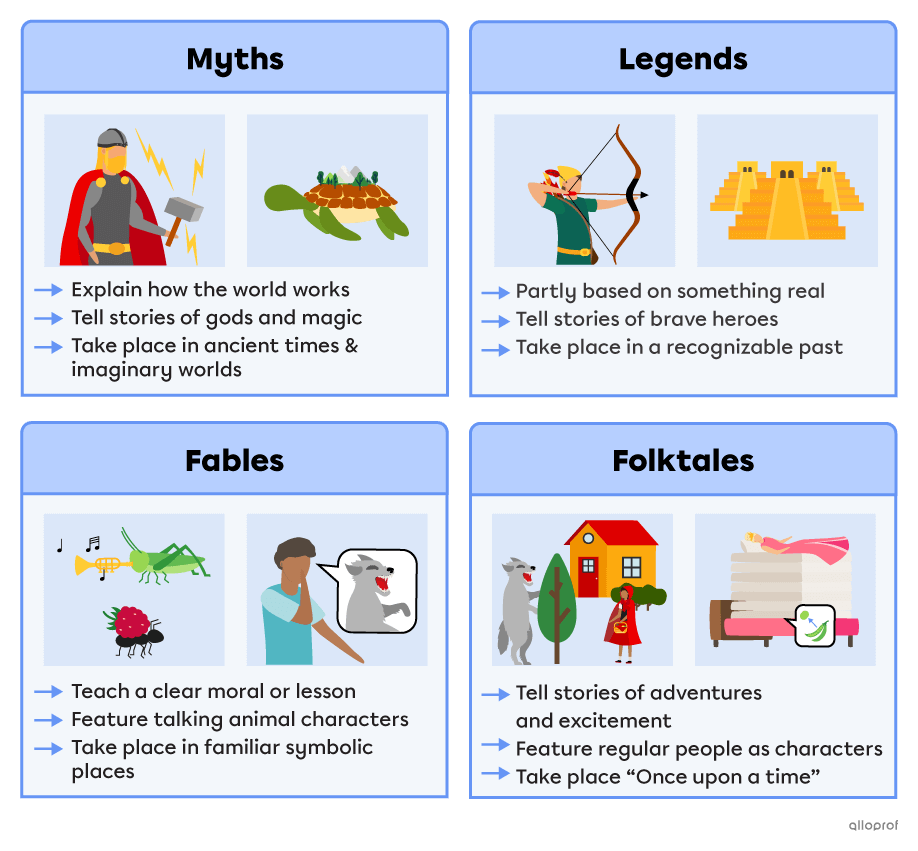Fables are stories that teach a moral or a lesson, usually with animals acting like humans.
Here are some of the key features specific to fables.
Teachable moments
• Clear moral or lesson
• Often explicitly stated at the end
Characters involved
• Animals that behave like humans
→ Display human strengths & weaknesses
• Regular people (in some cases)
Setting
• Simple, not detailed
• Familiar places used as symbolic meaning
→ Places used to represent something else like an idea or a feeling
Story format
• Short, with a simple plot
• Often involve a small problem and a quick solution

Story structure
• They all use characters and settings to tell their stories.
• All their plots have a beginning, a middle and an end.
Oral tradition origins
• People told these stories for a long time before they were written down.
• This is why there are many variations of similar stories told all over the world.
Teach and entertain
• They often have teaching moments on lessons, cultural values, beliefs, historical facts or traditions.
• They are engaging and very imaginative.

Here are examples of some key features that differentiate myths, legends, fables and folktales.
